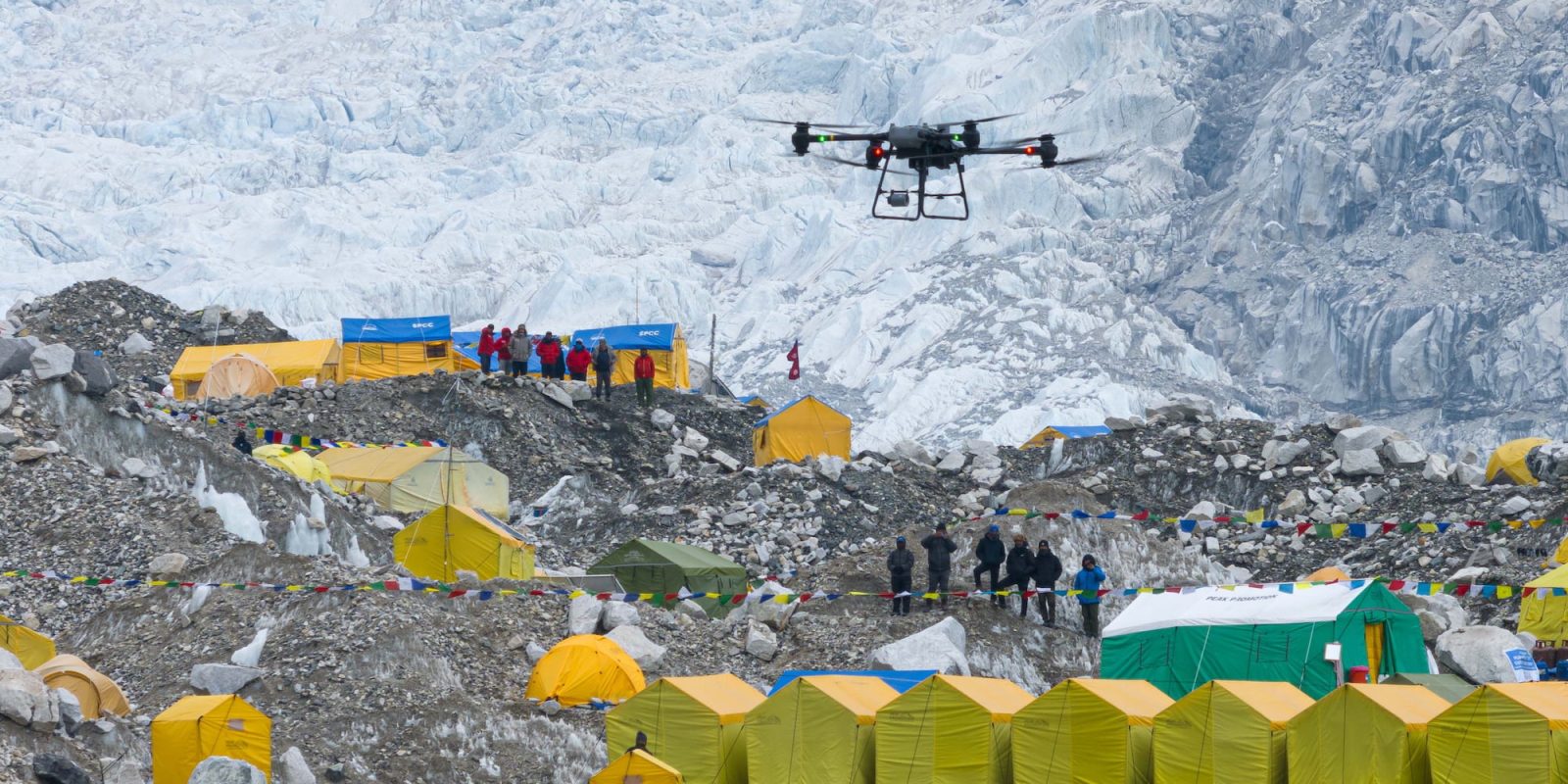
Nepal is gearing up to use DJI delivery drones to transport waste from the 6,812-metre-tall Ama Dablam, a popular peak in the Everest region. DJI FlyCart 30 drones will take on the job traditionally handled by Sherpa guides, which officials believe will help reduce casualties on Everest. This marks the first commercial application of drones in Nepal’s high-altitude zones.
DJI recently conducted the world’s first drone delivery test on Everest. According to the Kathmandu Post, the test result showed that the DJI FlyCart 30 could airlift 234 kg between Everest Base Camp and Camp 1 in an hour, which is amazing because it’s a task that usually requires at least 14 porters and takes over six hours.
The thing is, these camps are separated by the Khumbu Icefall, one of the most perilous stages of Everest’s ascent. While helicopters can theoretically make the same journey, they are rarely used due to the significant dangers and costs. Sherpas usually end up crossing the icefall over 30 times a season to transport supplies such as oxygen bottles, gas canisters, tents, food, and ropes. And that is a job that comes with many risks.
In April 2014, an avalanche caused by a falling serac buried 16 Sherpas in the Khumbu Icefall, leading to the cancellation of that season’s expeditions. Last year, three Sherpa guides who were setting up routes were buried under ice masses from another avalanche in the Khumbu Icefall, and their bodies remain unrecovered.
It’s no wonder Nepali officials and mountaineers see drones as life-saving tools because they promise to reduce the risks faced by the Sherpas. In addition, the initiative is particularly timely as climate change melts snow and ice, revealing decades-old garbage and posing severe health risks.
Nearly 60,000 people trek to Everest Base Camp annually, and since 2015, climbers have been required to carry down 8 kg of garbage, supported by a refundable $4,000 deposit.
This spring alone, nearly 100 tonnes of waste were collected from Everest and Lhotse, with 77.19 tonnes from the Everest Base Camp alone, according to the Sagarmatha Pollution Control Committee. So, the deployment of DJI drones could also address the increasing waste problem on Everest, often dubbed the “world’s highest garbage dump.”
Amid growing tensions between the US and China, DJI is facing scrutiny from American lawmakers, but in Nepal, the focus remains on the life-saving potential and environmental benefits of the drone maker’s cutting-edge technology.
Read more: DJI releases new firmware for RC, RC 2, RC Pro controllers
FTC: We use income earning auto affiliate links. More.






Comments